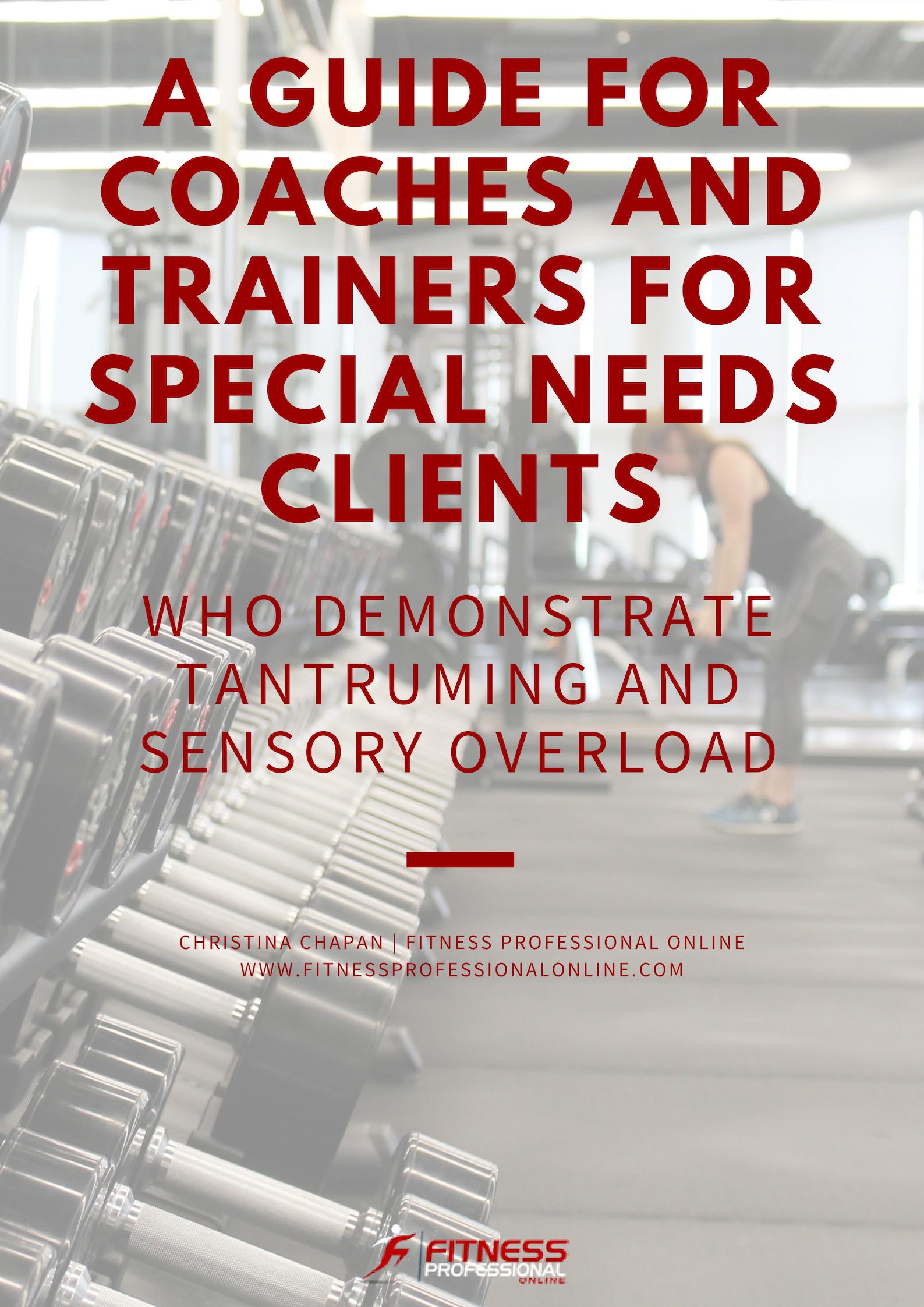Trainers and coaches have found a new opportunity when they work with the developmentally disabled, mentally challenged, and behavior challenged. These youth and adults need fitness even more so than the average child or adult. And we trainers can work with a population that will show and benefit greatly from our expertise. But the challenge is knowing the difference between behavior that is a tantrum and what is a behavior. Tantrums and sensory meltdowns are not the same things. It can be hard to tell the difference between them by just looking at an upset individual. But for kids who have sensory processing issues or lack self-control, a meltdown is very different from a tantrum. Knowing the causes of tantrums and meltdowns can help you learn how to manage them.

Tantrums
A tantrum is an outburst that happens when a child/person is trying to get something he wants or needs. Some kids with learning and attention issues are more prone to tantrums. For instance, some can be impulsive and have trouble keeping their emotions in check. They may get angry or frustrated quickly. A child/person may have a tantrum if he didn’t get to go first or in his mind that someone else gets impartial treatment. Yelling, crying or lashing out isn’t an appropriate way for him to express his feelings, but he’s doing it for a reason. And he has some control over his behavior. A tantrum occurs when your child is denied something they want. Generally speaking, he is in control of his behavior in a tantrum scenario. Tantrums are goal driven. To effectively deal with tantrums, let them know you know they are tantruming but not giving in. When the participant is calm, ask them what they did wrong and what they can do differently next time. Tantrums are habits that have been allowed for a long time and it takes time to break them.
Sensory Meltdowns
Sensory meltdowns happen as a result of sensory overstimulation and a feeling of being overwhelmed. That’s why they’re also known as “sensory meltdowns.” Sometimes, there’s an apparent cause for these meltdowns like a change in routine, hunger, thirst, lack of sleep, or the sensory of a busy environment. A meltdown is a reaction to feeling overwhelmed and being out of control. They do not care who is around and what is happening around them. A “fight or flight” response kicks in and the excess input overflows in the form of zoning out, curling up in the fetal position, screaming, spitting, throwing things, yelling, crying, lashing out, or running away. His brain has switched into fight or flight and he isn’t in control. This is especially difficult if you are in a public setting. But you have to remember this is not a behavior issue; this is a brain reaction. First of all. plan for them in advance. Ask parents or those who work with the child/adult and ask them for advice in working with the individual. Stay calm, change location, find a safe calming area, use visual schedules of activities, and be aware of danger signs that start the behavior. Triggers that set off the individual should also be recognized.
There are many ways to calm an individual who is having a meltdown or tantrum. Sensory meltdowns and tantrums can be stopped or halted using tools such as bubbles, calming music, timers, stress balls, weighted scarfs or blankets, noise-canceling headphones, spinners, and fidgets. Also helpful are calm-downs, visual schedules, strategies cards, Etch-a-Sketch, light-up toys, chew bracelets, and necklaces. Other calmers are Silly Putty, Play-Doh, massage balls, calming oils, Slinkys, sensory sox, calming sand, or oil bottles. And there are scooter boards, Wikki Sticks, resistance balls, bean bags, tent tunnels, and battery-operated candles with a controller, various colors and effects. Many of these are used under the direction of an occupational therapist and sensory diet. Generally, the activities range from heavy to light, depending on the participants’ needs.
Working with special needs persons who have tantrums or behavior issues, I have found the following ideas successful with them. First, have a flexible plan. If you need to accomplish strength training, let them decide on what they would like to do first. Decide upon upper, lower or core exercises and even the equipment they use such as strength bands, free weights, or machines. They can choose the machine for cardio, and even give input into the workout with music. In the past, I have added yoga, ropes, and kickboxing, depending on the interests of the participant. Another advantage of working with participants with special needs is they need fitness even more than most people and their retention is much longer than other clients. One client I have worked with for eleven years, and many participants have been in the program I have taught for over five years. That is unheard of in the fitness industry, where it is typically six to nine months in a program. So expand your world and embrace your practice by working with those with special needs or behavioral or sensory issues.
Sensory
https://www.pinterest.com/cchapan/sensory/?eq=sensory&etslf=7806
Was this Article Helpful?
If this article was helpful to you, please consider linking this article to your own blog or sharing this through the social buttons below. You will also find other great articles at “Special Populations“.
- 7shares
- 2Facebook
- 0Twitter
- 5Pinterest
- 0LinkedIn
Christina Chapan
Latest posts by Christina Chapan
- Body Language for Personal Trainers,Teachers and Group Instructors - January 12, 2020
- Allergies + Exercise: An Overview - January 9, 2020
- The Safety of Running Solo - January 5, 2020


















